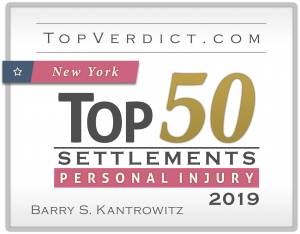 Trucker Anti Coercion Rule
Trucker Anti Coercion Rule
On January 29, 2016, what is referred to as the anti-coercion rule went into effect. This addition to the Federal Motor Carrier Safety Regulations aims to prevent commercial carriers like trucking company owners from pressuring drivers into violating safety regulations. In the context of truck accident personal injury claims, the new rule could solidify a finding of liability against an industry owner who has acted wrongly.
The Rockland County and Bergen County truck accident lawyers at Kantrowitz, Goldhamer & Graifman P.C. understand the intricacies of proving liability for a truck accident and also know the difference a successful verdict can make in the lives of the victims.
What is the anti-coercion rule?
A new federal rule contained in the Federal Motor Carrier Safety Act at 49 CFR 386 and 49 CFR 390 that makes it illegal for commercial carriers, shippers, receivers, or brokers to coerce – pressure – commercial truck drivers to operate their vehicles in a way that violates federal regulations. If a driver is coerced, he can file a complaint with the Federal Motor Carrier Safety Administration and the party making the coercion could face a stiff fine.
Congress passed the Moving Ahead for Progress in the 21st Century Act (MAP-21) in 2012. MAP-21 contains a rule protecting drivers who report coercion by carriers, shippers, or others who may gain by bypassing safety laws. Common causes of truck accidents include driver fatigue, driving under the influence of drugs or alcohol, and distracted driving – all actions that are prohibited by federal regulations and MAP-21 increases the incentive for carriers, shippers, and others to ensure their drivers are not engaging in them.
What is coercion in trucking?
The law applies when the carrier or other party instructs the driver to take an action that violates the governing federal interstate carrier laws – the Federal Motor Carrier Safety Regulations (FMCSR), the Federal Motor Carrier Commercial Regulations (FMCCRs), or the Hazardous Materials Regulations (HMRs). When this happens, the driver must inform the company that the specific conditions of the driving request would be in direct violation of one or more of these laws, put others at risk, or would cause them to exceed the set limit of hours they are permitted to legally drive. He or she must state generally which violations would occur.
If the company or other person making the improper request responds with a threat to withhold business or work opportunities from the driver or to take any adverse employment action in order to induce the trucker to drive, this constitutes coercion.
How should drivers respond to coercion?
To gain the protection of the new rule, a driver must file a formal complaint for coercion with the FMCSA within 90 days of the occurrence. The complaint must provide details and it must be signed by the driver – anonymous complaints are not accepted.
Coercion complaints are investigated by the FMCSA and violators face a steep penalty of $16,000. The FMCSA is also looking to streamline the coercion rule with the whistle-blower statute under the Occupational Safety and Health Administration, providing lost wages and punitive damages to employees subjected to retaliatory action.
How does anti-coercion rule affect civil liability?
The purpose of the anti-coercion rule is to deter unsafe driving so in theory it would reduce the number of truck accidents caused by unsafe driving that violates carrier laws. The reach goes beyond that though; when a driver makes a coercion report, that documentation can be discovered down the road if the carrier is implicated in another incident.
To be held liable for a truck accident, a defendant – whether it is a driver, truck owner, trucking company, loader, or some other entity, must have breached some duty and the breach must have proximately caused the accident. Under a legal doctrine known as negligence per se, when someone violates a law or regulation specifically designed to prevent harm and in doing so, causes the kind of harm that was meant to be prevented, that party is legally presumed to be at fault. A record of coercion can bolster a claim against a company by showing that it has tried to put the public at risk by directing drivers to violate safety laws.
Consult a New York and New Jersey truck accident lawyer
Successfully pursuing a truck accident claim requires extensive knowledge of multiple topics, from the legal theories of liability that apply to the different parties to the physics that underlie persuasive evidence, to the rules and procedures that a court requires litigants to follow. The attorneys at Kantrowitz, Goldhamer & Graifman P.C. have been through the paces, representing truck accident victims throughout Rockland County and Bergen County. Call today to schedule a no-cost consultation to discuss your legal options.
Additional Trucking Coercion Rule Resources:
- Federal Register, Prohibiting Coercion of Commercial Motor Vehicle Drivers, https://www.federalregister.gov/documents/2015/11/30/2015-30237/prohibiting-coercion-of-commercial-motor-vehicle-drivers
- Federal Motor Carrier Safety Administration, FMCSA’s Final Rule Prohibits Coercion, Protects Commercial Truck and Bus Drivers From Being Forced to Violate Safety Regulations, https://www.fmcsa.dot.gov/newsroom/final-rule-prohibits-coercion-protects-commercial-truck-and-bus-drivers-being
- Overdrive, FMCSA’s driver coercion rule published, blocks carriers, shippers from threatening drivers with loss of pay, http://www.overdriveonline.com/fmcsas-driver-coercion-rule-published-blocks-carriers-shippers-from-threatening-drivers-with-loss-of-pay/






